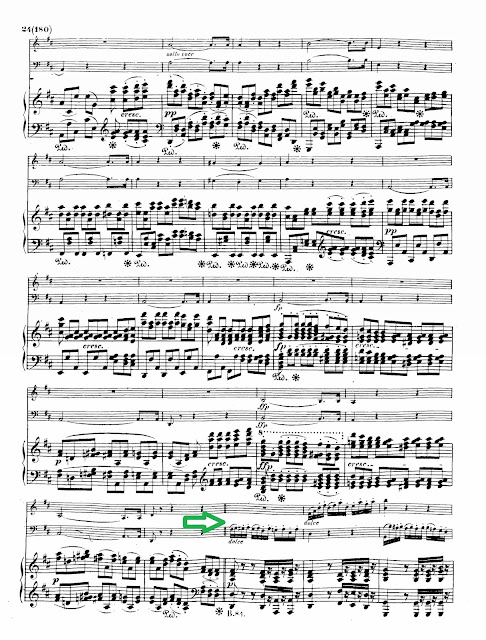CDLXXV. BEETHOVEN, Ludwig van (1770-1827)
The "Archduke," dedicated to Rudolph.
On March 15, 1811, the paper florin was devalued fivefold. Beethoven's annuity of 4000 fl. became 800 fl. in the new Viennese currency. Despite his protestations, the annuity was not restored to its previous value.
However, Rudolph was one of those patrons who valued Beethoven's work to such an extent, that he immediately agreed to pay him at the old rate.
Publishing was another matter. Breitkopf & Härtel passed and it wasn't until 1816 that it appeared in print, with the Archduke dedication.
However, Rudolph was one of those patrons who valued Beethoven's work to such an extent, that he immediately agreed to pay him at the old rate.
Publishing was another matter. Breitkopf & Härtel passed and it wasn't until 1816 that it appeared in print, with the Archduke dedication.
**
First movement
First movement
The first five notes form the main thematic material for the entire movement.
Second subject in G Major, submediant:
The Coda reprises the five-note theme -- notice the dynamic contrast and the gradual crescendo building up to the end ...
Second movement
Second movement
Switching the traditional slow-fast movements to fast-slow in the second and third position of a four-movement work, Beethoven creates a new mood immediately. The delightful little duet in the strings is only joined by the piano in the last bar (five notes!) of the phrase:
with a key sig change to the parallel minor, B-Flat.
Solo cello. No pulse or key discernible, with a chromaticism that borders on atonality:
Solo cello. No pulse or key discernible, with a chromaticism that borders on atonality:
Three times, this eerie, unworldly music is comically interrupted by a loud waltz theme -- first in D-Flat, then E and finally B-Flat:
An exquisite theme and five variations. V. 1:




















No comments:
Post a Comment